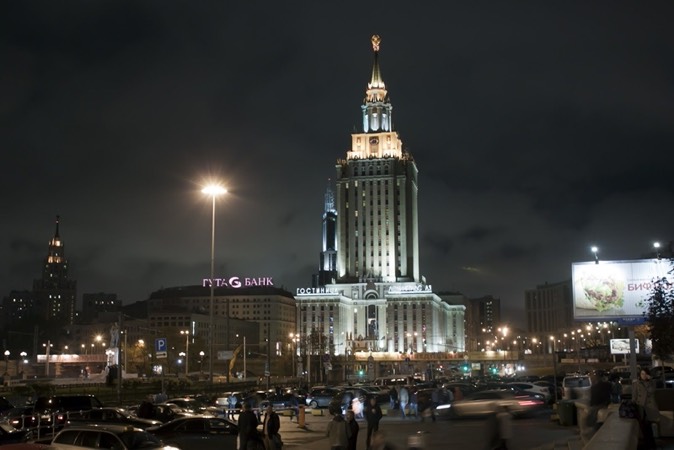Komsomolskaya Square (Three Stations Square)
Until the 1930s, ** Komsomolskaya Square ** was called Kalanchevskaya, after the name of the Kalanchevskaya field, on the site of which it was built. It was founded when the rapid construction of the railway began in the second half of the 19th century, and received its name in honor of the young There are three stations on the square: [Leningradsky](http://kudago.com/msk/place/leningradskij-vokzal/), [Kazansky](http://kudago.com/msk/place/kazanskij-vokzal/) and [Yaroslavskiy](http://kudago.com/msk/place/yaroslavskij-vokzal/).
This place has an ancient history full of unpleasant events. Legend has it that in the XIV century there was a monastery here. One night a storm raged in the vicinity, and a poorly dressed wanderer knocked on the monastery gate with a request to take him in, but the monks did not let him in. Having been refused , the traveler became angry and cursed the monastery, predicting that the monastery and those living there the Nakh will be buried under the sands. Suddenly, the raging storm subsided, but the monastery walls began to crack and crumble into stones, tumbling down all the people inside.
For more than three centuries, this place was a wasteland. And finally, by order of Tsar Alexei Mikhailovich, a traveling palace was built here, next to which a wooden tower was installed, after which the area became known as the Kalanchevskoye field. However, the palace was not destined to exist to this day: in the 19th century there was a fire that completely destroyed the structure. Then there were rumors that this incident was the result of a curse imposed on this place.
On the banks of the Red Pond, where Leningradsky and Yaroslavsky railway stations are today, the Field Artillery Yard was built in the last decades of the 17th century. In 1812, the shells stored there suddenly exploded and the yard burned down. In the 18th century, a theater was built on this site, the wooden building of which burned down completely several times.
The middle of the 19th century was marked by the rapid development of railway construction. During this period, the Nikolayevsky (now Leningradsky) railway station began to be built on the territory of the Kalanchevskoye field. During the construction of the station, many problems had to be dealt with: there were difficulties in draining the swamps, the newly erected walls suddenly collapsed, workers died. Subsequently, two more stations were founded on this square - Ryazansky (later renamed Kazansky) and Yaroslavsky.
Today, employees of these stations and people walking nearby regularly observe a very poorly dressed strange old man with a long stick. He approaches the Kazan railway station, kneels down, makes the sign of the cross three times and disappears... There is a belief that this is the wanderer who cursed the monastery in the 14th century, and then repented and to this day is trying to atone for his sin.
Address
Komsomolskaya Square
Address
Komsomolskaya Square
Address
Komsomolskaya Square
Website
Komsomolskaya Square (Three Stations Square)
Website
Komsomolskaya Square (Three Stations Square)
Website
Komsomolskaya Square (Three Stations Square)
Source
https://kudago.com/msk/place/ploshad-tryoh-vokzalov/
Source
https://kudago.com/msk/place/ploshad-tryoh-vokzalov/
Source
https://kudago.com/msk/place/ploshad-tryoh-vokzalov/


